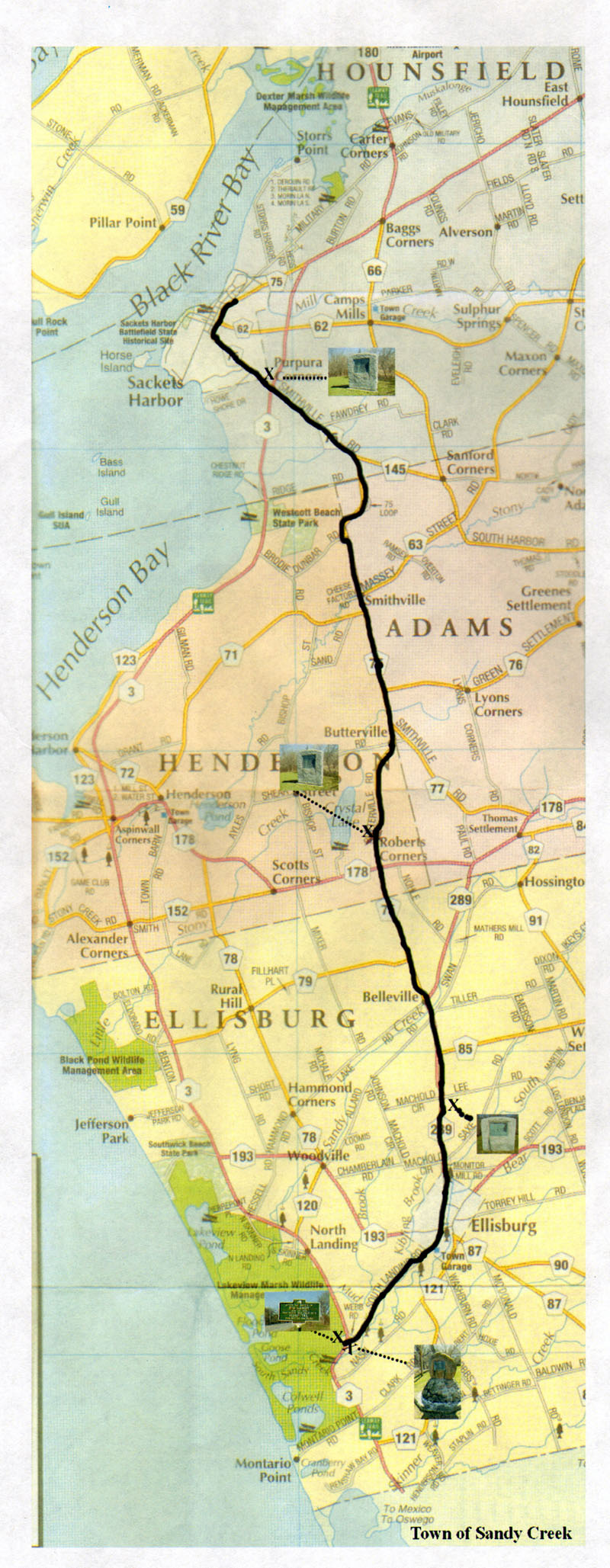The Battle of Big Sandy and Carrying the Great Cable....
May 28-29, 1814
Soon after the British evacuated Oswego the Americans decided the guns and supplies stored at Oswego Falls (Fulton) must be transported to Sackets Harbor for the frigate Superior. Woolsey loaded the cargo into 18 boats on the night of May 28. In addition to his crew and the United States Army Riflemen, Oneida Indians accompanied the force along the Lake Ontario Shore. In order to avoid a vigilant British force on the lake, the small flotilla pulled into Sandy Creek, 20 miles south of Sackets Harbor. Unfortunately, one of the American transports was lost during the night and captured by the British, who were now alerted to the American movement.
Woolsey sailed up Sandy Creek as far as he could and started to off-load the cannons and supplies for an overland journey to Sackets Harbor. The British, too, sailed up the waterway, pursuing the Americans. Major Appling hid his riflemen and the Indians in the woods along the creek bank. Once the British were far enough up the creek, riflemen’s fire struck them from all sides. In no time, the entire British force was killed, wounded or captured. The American side counted one Indian dead and one rifleman wounded.
The Americans had successfully captured the British force sent to capture them. The Americans still needed to transport the supplies and cannon destined for the new frigate Superior on to Sackets Harbor as quickly as possible.
They were unable to sail into Sackets Harbor because of the strong British force still searching for them on Lake Ontario. It was decided therefore, to transport the guns and supplies overland. All of the oxen, horses, wagons and militia were summoned from the surrounding countryside to assist in the task. The heavy guns were hauled off to Sackets by teams of horses. A huge cable, 300 feet long, 22 inches in circumference and weighing 9600 pounds, was left behind. This cable of hemp was the raw material, which would be spun into rigging for the frigate, Superior. No mode of transportation could be found to carry this huge cable and after a week’s delay, the local militia regiment volunteered to carry it there on their shoulders. Some accounts say that after coiling as much of the cable as possible on an ox drawn cart drawn by three oxen, the militia took up the rest of the cable and began the journey to Sackets Harbor. It is said that two hundred men carried the cable the twenty miles to Sackets and some of the men bore the scars to their graves. The cable was heavy, rough and cumbersome. They made pads of grass to place between the cable and their shoulders and worked in rotation, 100 carrying while 100 walked along to rest.
The cable carrying procession left Sandy Creek at noon and arrived at Sackets Harbor toward the evening of the third day. They were met by thousands of shipbuilders, soldiers and sailors. Martial music was played and kegs of whiskey were rolled out to celebrate the occasion.

|

